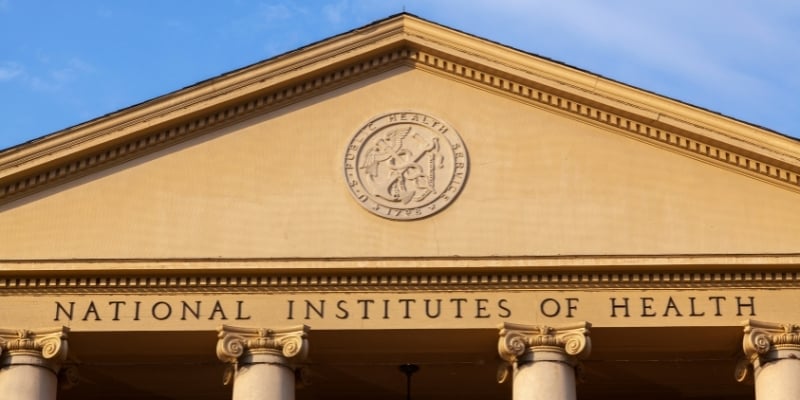The Colorado Department of Public Health and Environment (CDPHE) recently named a new chief medical officer who is also a familiar face.
Dr. Ned Calonge, Associate Dean for Public Health Practice and associate professor of epidemiology at the Colorado School of Public Health, previously served as CMO for CDPHE from 2002 to 2010. In one way, not much has changed since he left the post 13 years ago, he said.
“Much of the core practices of public health are the same,” Calonge said. What is different, he added, is the magnitude of the challenges public health faces. For example, during his first tenure as CMO, Colorado dealt with identifying and managing dangerous viruses, including West Nile, H1N1 (which triggered a widespread influenza outbreak), and SARS-CoV (which causes severe acute respiratory syndrome).
But he noted that “none of those matched the impact” of the SARS-CoV-2 virus, which triggered the COVID-19 pandemic and its long waves of serious illness, death, and social unrest.
The CDPHE played a key role, along with the Governor’s office and ColoradoSPH, in helping the state manage the pandemic “fairly well,” Calonge said. The key: gathering and sharing epidemiologic data that allowed leadership to make better, more informed policy decisions. It’s a formula for future success, he added.
“Partnerships and strong leadership from the Governor’s office are key elements in being able to respond to whatever comes next,” Calonge said.
Ongoing and new public health priorities
One major goal is to rebuild the state’s emergency preparedness infrastructure, which Calonge said has been a casualty of systematic federal defunding. The COVID-19 pandemic exposed that weakness and the need to reinvest. He also specified his major priorities for a second stint as CDPHE’s CMO:
- Addressing issues of health equity and health disparities
- Rebuilding trust in public health and science among the public
- Strengthening the public health workforce
- Bringing individuals in academic and public health practice closer together and building collaborative relationships between them.
Calonge is a longtime advocate for working to close disparities in healthcare delivery for underserved communities. From 2010 to 2022, he served as president and CEO of The Colorado Trust, which funds projects across the state that aim to address healthcare disparities. In addition, while he was CMO of CDPHE the first time around, the agency created the Office of Health Disparities (now the Office of Health Equity) and the Health Equities Commission. Calonge wants that focus to continue.
“The Health Equities Commission engages the leadership of other state agencies that have a stake in addressing the social determinants of health,” he said. “There is a much larger level of commitment, interest, and activities in an area that is important to me.”
Calonge stressed that CDPHE lacks the resources to take on many social determinants of health, such as housing and education. But the agency can continue to highlight their importance to public health.
“Keeping equity issues at the forefront is a key element of what I want to do,” he said.
Rebuilding trust in public health
Taking on any public health issue will depend on more than committing human and financial resources, Calonge added. It also requires regaining the faith and trust in public health that dwindled during the COVID-19 pandemic.
“I see that as a major challenge,” Calonge said. Prior to the pandemic, “I never felt this sense of distrust. I felt the public was turning to us, trusting what we said and letting science move us forward.”
The change in public perception may have come with what some viewed as “extreme measures,” such as mask mandates, social distancing requirements, and school closures, that “impeded personal freedoms,” Calonge said. With the pandemic now in retreat, he sees an opportunity for public health professionals to dispel suspicions before they harden irretrievably.
“We need to get back to other aspects of public health that people expect, like food safety, air and water quality, and vaccinations for schoolchildren,” he said. An important part of that effort, he added, will be for local public health departments to build strong relationships with local boards of health and elected county commissioners who must be responsive to their constituents.
“The more we can rebuild our relationships with elected leaders at the city, county and state levels, I think we’ll be able to be successful,” Calonge said. “A lot of that is just meeting and talking and listening to people’s concerns.”
He noted that outgoing ColoradoSPH Dean Jonathan Samet made that commitment by connecting with communities of color and low-income individuals during the pandemic. He’s confident the willingness will continue when Dr. Cathy Bradley moves into the position Aug. 1.
“All our faculty have the ability to do that through partnerships they have within community groups,” Calonge said.
Strengthening the public health workforce
The COVID-19 pandemic not only eroded public trust, but also the public health workforce, Calonge pointed out. The ordeal created “an impressive amount of turnover in leadership at the local level across the state. It’s hard to backfill all of those positions with folks who have experience in training and education,” he said.
He added, however, that ColoradoSPH can play a big role in bridging that gap. For example, Trailhead Institute, a non-profit public health organization led by ColoradoSPH alumna Sarah Lampe, MPH ‘09, has partnered with a number of other organizations, including ColoradoSPH and its Rocky Mountain Public Health Training Center, to sponsor the Colorado Public Health Workforce Collaborative.
“This effort is based on the recognition that, even prior to the pandemic, there were significant challenges to maintaining sufficient resources for local public health services,” Calonge said.
The collaborative has released and is working to implement a “blueprint” for rebuilding and strengthening the workforce as it moves forward. The Rocky Mountain Public Health Training Center, part of ColoradoSPH’s Center for Public Health Practice, is contributing remote training for new and established professionals to learn and sharpen their skills, Calonge said. “It’s a natural partnership between public health and the school.”
Closer ties between academic public health and public health practice
In his role as Associate Dean for Public Health Practice, Calonge has continued the work of his colleague, Dr. Lisa Miller, in creating “academic public health departments” that bring together academicians from the school and local public health departments. The approach promises benefits for both, he said. It potentially opens up more opportunities for students to complete their capstone and practicum projects in public health departments while also helping professionals make academic connections and draw on research that could strengthen their practice and help to build their workforce.
“It’s one of the most exciting things about taking on this additional role as CMO,” Calonge said. “It also makes my role as associate dean more natural and easier to meet the objectives and goals [of the program].”
The three academic health departments created thus far include a partnership between ColoradoSPH at Colorado State University and Larimer County Public Health. The Denver Department of Public Health and CDPHE have also created academic ties, Calonge said.
Partnerships produce tangible results
The CSU-Larimer County collaboration, signed before the COVID-19 pandemic, was the first of its kind in the state and produced tangible results when pandemic cases began piling up, Calonge said. The county worked with CSU to expand lab capacity to test people for COVID and for the presence of the virus in wastewater, he explained.
“Because that relationship was in place, the work happened very quickly,” Calonge said.
Meanwhile, the Denver Department of Public Health and CDPHE have been working with ColoradoSPH to create “easier pathways” for identifying preceptors to work with and guide students, Calonge added.
“Public health departments get additional people resources – hands and minds,” Calonge said. “Students are introduced to a site and public health practice that might create a relationship and a pathway to a career. In future years we could create a pipeline for a well-trained and available public health workforce for Colorado.”
No one can say with certainty what new public health challenges will confront Colorado in the years to come. But Calonge is certain that doing so will require people in all communities and all levels of government who are united in the common goal of protecting citizens and their quality of life.
“As we rebuild our public health response capabilities, we must understand that it’s all about establishing relationships and resources,” he concluded. “If we keep relationships together, we will have the infrastructure to build successful programs when funding becomes available in response to an emergency need.”






